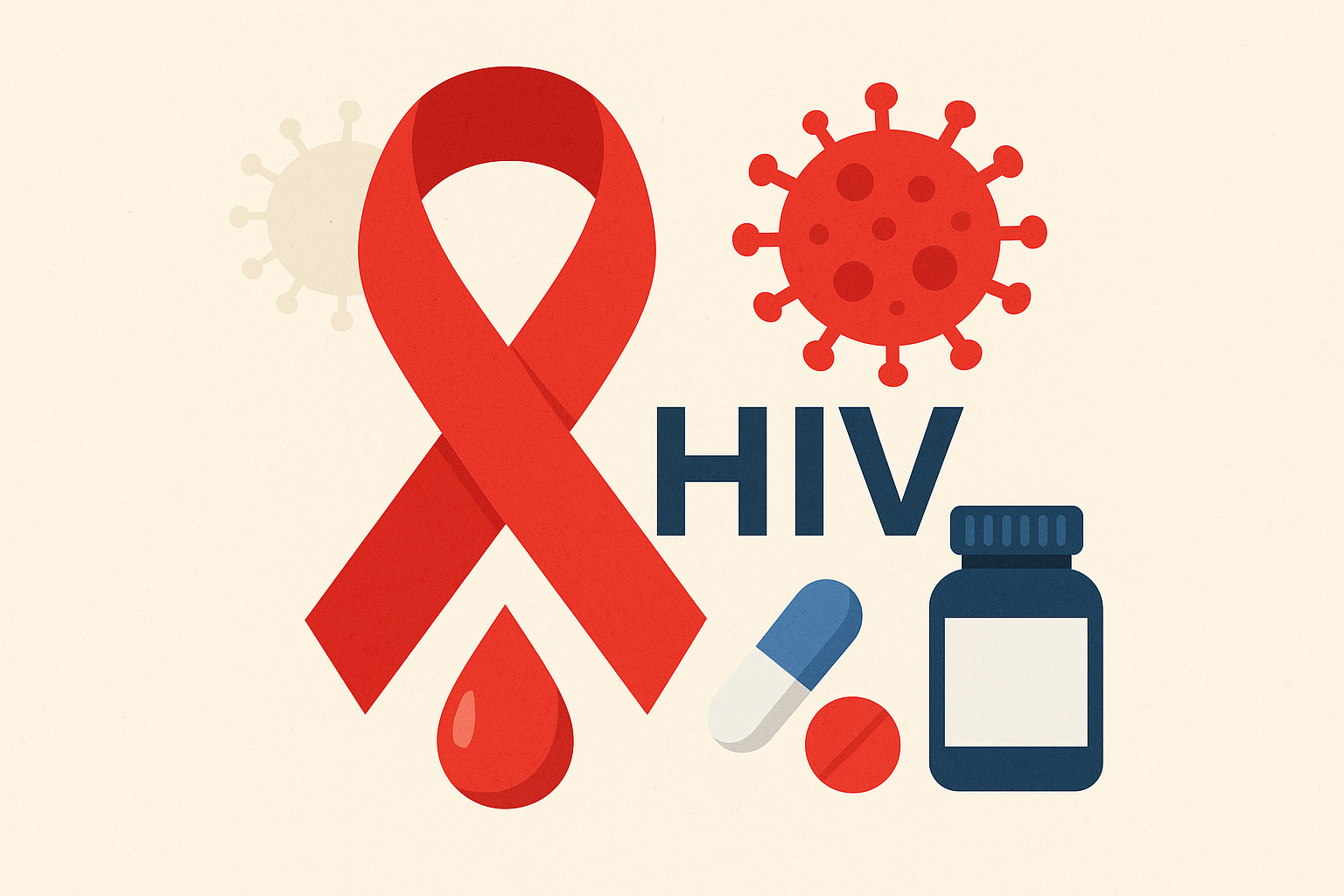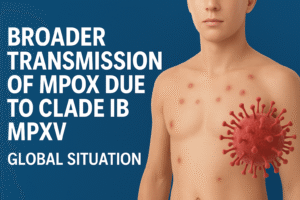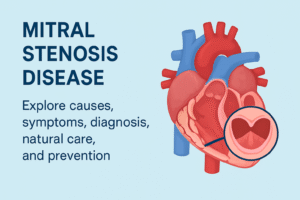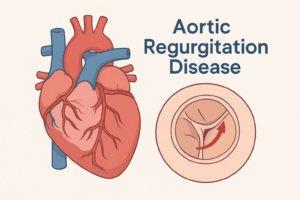In this blog, we are going to talk about a very sensitive and serious topic — HIV. If you or someone close to you is affected, don’t lose hope. With timely treatment and the right lifestyle, a long and healthy life is possible.
According to the World Health Organization (WHO), nearly 39 million people worldwide were living with HIV in 2023. Thanks to medical advances, particularly antiretroviral therapy (ART), HIV is now a manageable condition.
This article explores causes, stages, symptoms, prevention, treatment, and global impact of HIV — backed by WHO research.
What is HIV?
HIV (Human Immunodeficiency Virus) is a virus that targets CD4 cells (T-cells), which act as the body’s shield against infections.
Over time, HIV weakens the immune system and, without treatment, can progress to AIDS (Acquired Immunodeficiency Syndrome).
Unlike in the early years of the epidemic, HIV is now treatable and manageable with ART.
Causes of HIV
HIV spreads through the exchange of certain body fluids from an infected person:
- Blood
- Semen and pre-seminal fluids
- Vaginal and rectal fluids
- Breast milk
Common Modes of Transmission:
- Unprotected sex (anal or vaginal) with an HIV-positive partner
- Sharing contaminated needles or syringes
- Transfusions of unscreened blood (rare today due to strict testing)
- Mother-to-child transmission during pregnancy, childbirth, or breastfeeding
Important: HIV does not spread through hugging, shaking hands, kissing, or sharing food.
Stages of HIV Infection
1. Acute HIV Infection (2–4 weeks after exposure)
- Flu-like symptoms: fever, sore throat, rash, swollen lymph nodes
- High viral load, making transmission easier
2. Chronic HIV Infection (Clinical Latency Stage)
- Virus remains active but at low levels
- Many people are asymptomatic
- Can last up to 10 years or longer with treatment
3. AIDS (Advanced Stage)
- Severe immune system damage
- High risk of opportunistic infections (TB, pneumonia, cancers)
- Without treatment, life expectancy is significantly reduced
Types of HIV
- HIV-1 – The most common and aggressive type; responsible for the global pandemic.
- HIV-2 – Found mostly in West Africa; slower progression, less transmissible.
Symptoms of HIV
- Early stage: fever, rash, sore throat, swollen glands, fatigue
- Chronic stage: weight loss, night sweats, diarrhea, recurrent infections
- AIDS stage: rapid weight loss, prolonged fever, skin blotches, neurological issues
Treatment Without Medicine (Supportive Care)
While there is no cure for HIV, and ART is essential, certain lifestyle habits help improve quality of life:
- Nutritious diet – boosts immunity
- Regular exercise – reduces fatigue, strengthens body
- Stress management – protects immune system
- Adequate sleep – helps recovery
- Avoid alcohol, smoking, drugs – prevents added strain
Note: These measures cannot replace ART. According to WHO, ART is life-saving and mandatory.
Prevention of HIV
WHO and UNAIDS recommend:
- Consistent condom use during sex
- PrEP (Pre-Exposure Prophylaxis) for high-risk individuals
- PEP (Post-Exposure Prophylaxis) within 72 hours of exposure
- Safe injection practices and blood screening
- Regular HIV testing
- ART for HIV-positive mothers to prevent mother-to-child transmission
Healthy Diet for People Living with HIV
A WHO-recommended diet includes:
- Proteins: eggs, legumes, fish, lean meat
- Fruits & vegetables: rich in vitamins and antioxidants
- Whole grains: energy and fiber
- Healthy fats: nuts, seeds, olive oil
- Probiotics: yogurt, kefir, kimchi for gut health
Risk Factors for HIV
- Multiple sexual partners
- Unprotected sex
- Injecting drug use with shared needles
- Pre-existing sexually transmitted infections (STIs)
- Living in high-prevalence regions (especially Sub-Saharan Africa)
- Lack of awareness or testing
Global Impact of HIV
Despite progress, HIV remains a global challenge.
- 39 million people living with HIV (2023)
- 1.3 million new infections in 2022
- 630,000 HIV-related deaths in 2022
- Sub-Saharan Africa accounts for two-thirds of global cases
WHO & UNAIDS aim to achieve the 95-95-95 targets by 2030:
- 95% of people with HIV know their status
- 95% of diagnosed receive ART
- 95% of those on ART achieve viral suppression
Humanized Perspective
Beyond numbers, HIV affects real lives. Stigma and discrimination often hurt more than the disease itself. WHO emphasizes that education, awareness, and compassion are just as important as treatment — ensuring people living with HIV can live with dignity.
Frequently Asked Questions (FAQs)
1. What is the difference between HIV and AIDS?
HIV is the virus; AIDS is the advanced stage of untreated HIV infection.
2. Can HIV be cured?
No cure exists, but ART controls the virus and prevents transmission.
3. How soon do symptoms appear?
Within 2–4 weeks (flu-like symptoms), but some remain symptom-free for years.
4. Can HIV spread through casual contact?
No, it cannot.
5. What foods help HIV patients?
Proteins, fruits, vegetables, whole grains, and probiotics.
6. What is WHO’s role in HIV control?
WHO sets treatment guidelines, promotes testing, ensures ART access, and supports the global goal of ending HIV by 2030.
Quick FAQs (People Also Ask)
- Can HIV be cured completely? → No, but ART keeps it under control.
- How does HIV spread? → Blood, semen, vaginal/rectal fluids, breast milk.
- What are the first signs? → Fever, rash, swollen lymph nodes.
- Can HIV spread by touch? → No.
- What’s the difference between HIV-1 & HIV-2? → HIV-1 is more aggressive; HIV-2 is slower.
Conclusion
HIV is no longer a death sentence, but it is still a serious health challenge. With WHO-backed prevention, early testing, ART, and healthy lifestyle practices, millions can live long and fulfilling lives.
Ending HIV by 2030 requires awareness, compassion, and action from all of us.






